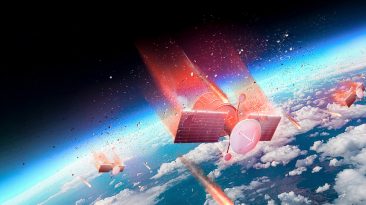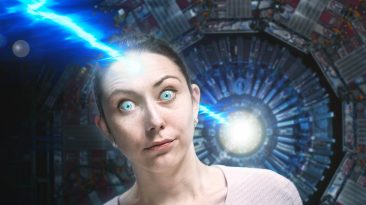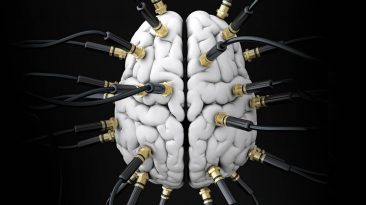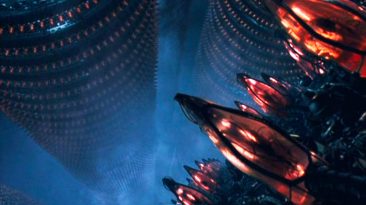In today’s tech-savvy world, it’s all around you – an invisible world of electromagnetic signals and radio waves.
Wi-Fi, or Wireless Fidelity, is responsible for over 60 percent of the planet’s internet traffic.
It’s seemingly everywhere, yet, imperceptible to the human eye. But what if you could see it?
What would Wi-Fi look like? And what would it do to you if you could see it?
Your eyes are pretty remarkable, and I’m not just saying that to be nice. You can see colors over an electromagnetic wavelength anywhere from 410 nanometers (here you’ll find violet) to roughly 680 nanometers (the home of red).
This is what we call “visible light,” also known as the visible spectrum. Its what humans can view without the aid of any fancy tech devices. Things like Wi-Fi are invisible to the human eye.
But what if it’s wasn’t? What would Wi-Fi look like?
There are upwards of 4 billion people accessing the internet around the world. That’s a lot of Wi-Fi signals.
If you could see them, you would be peeking into the unseen world of electromagnetic fields. Wi-Fi is all about transmitting and receiving data in the gigahertz (GHz) range.
If you woke up one day with the ability to see these signals, you would see frequencies up to 30 GHz, wavelengths greater than 10 millimeters (0.4 inches). Not so bad, right? Well, it is speculated that Wi-Fi waves, or pulses, are approximately 15 centimeters (six inches) apart.
So imagine a bombardment of colored bands taking over your vision. And that’s just in your bedroom.
With everything we have in our homes that relies on Wi-Fi and the ever-expanding availability of the signal, like city-wide public Wi-Fi networks, the visual stimulation would be too much. So what would happen to you if you started seeing Wi-Fi?
It would be overwhelming, to say the least. Prepare yourself for the worst headache in the history of headaches.
It would be inescapable. Wi-Fi routers or antennas can be attached to almost anything, including trees, buildings, lamp posts and other structures.
If you think that fleeing to the wilderness would work, a typical outdoor router can project its signal 300 feet or more from its location. All those routers will be creating a circular data field around them. Talk about being surrounded!
There have also been claims that just being exposed to electromagnetic fields can cause symptoms of anxiety, depression, nausea and suicidal thoughts. So, imagine what would happen if you could see them.
If you could see these signals, you would probably be looking for the deepest cave you could find to hide in, to escape from the constant barrage of lights and freakiness. But, could something like this actually happen?
Well, technically we could make this a reality, but it’s not something that would ever occur naturally. It’s easy to take a pair of, say, infrared goggles off. But if you were stuck with this ability forever, you’d be crushed by the overwhelming amount of visual input.
Overall, the idea of being able to witness Wi-Fi in action sounds like a really cool idea, but we should limit it to our technology, not ourselves. Thankfully, our natural eyes aren’t capable of seeing this invisible world, and we should consider ourselves lucky.
Electromagnetic waves can have all sorts of strange results on us. It’s even theorized that the phenomenon is responsible for what we know as “ghosts.” It makes you think, doesn’t it?
Subscribe to What-If on YouTube or follow the show on Facebook Watch.
Sources
- “Here’s What Wi-Fi Would Look Like If We Could See It”. 2013. Vice. Accessed December 10 2019.
- “Reading on Color & Light, Part I”. 2019. asu.edu. Accessed December 10 2019.
- “How Does Wi-Fi Work?”. Escobar, Eric. 2015. Scientific American. Accessed December 10 2019.
- “Internet Stats & Facts for 2019”. 2018. hostingfacts.com. Accessed December 10 2019.
- “Here’s How Wi-Fi Actually Works”. John Patrick Pullen, 2019. Time. Accessed December 10 2019.




























Then , think about if co2 is black visible coloured. If is always if…..
Wi-Fi does not mean Wireless Fidelity. This is a myth.
It has been dispelled by Phil Belanger, a founding member of the Wi-Fi Alliance. He comprehensively dispelled the idea: “Wi-Fi doesn’t stand for anything. It is not an acronym. There is no meaning.” The simple truth is that the organisation needed a name for their standard that would be easier to remember than “IEEE 802.11b Direct Sequence”.
They piggy backed on the term Hi-Fi which is shortened from High-Fidelity. Herein lies the confusion